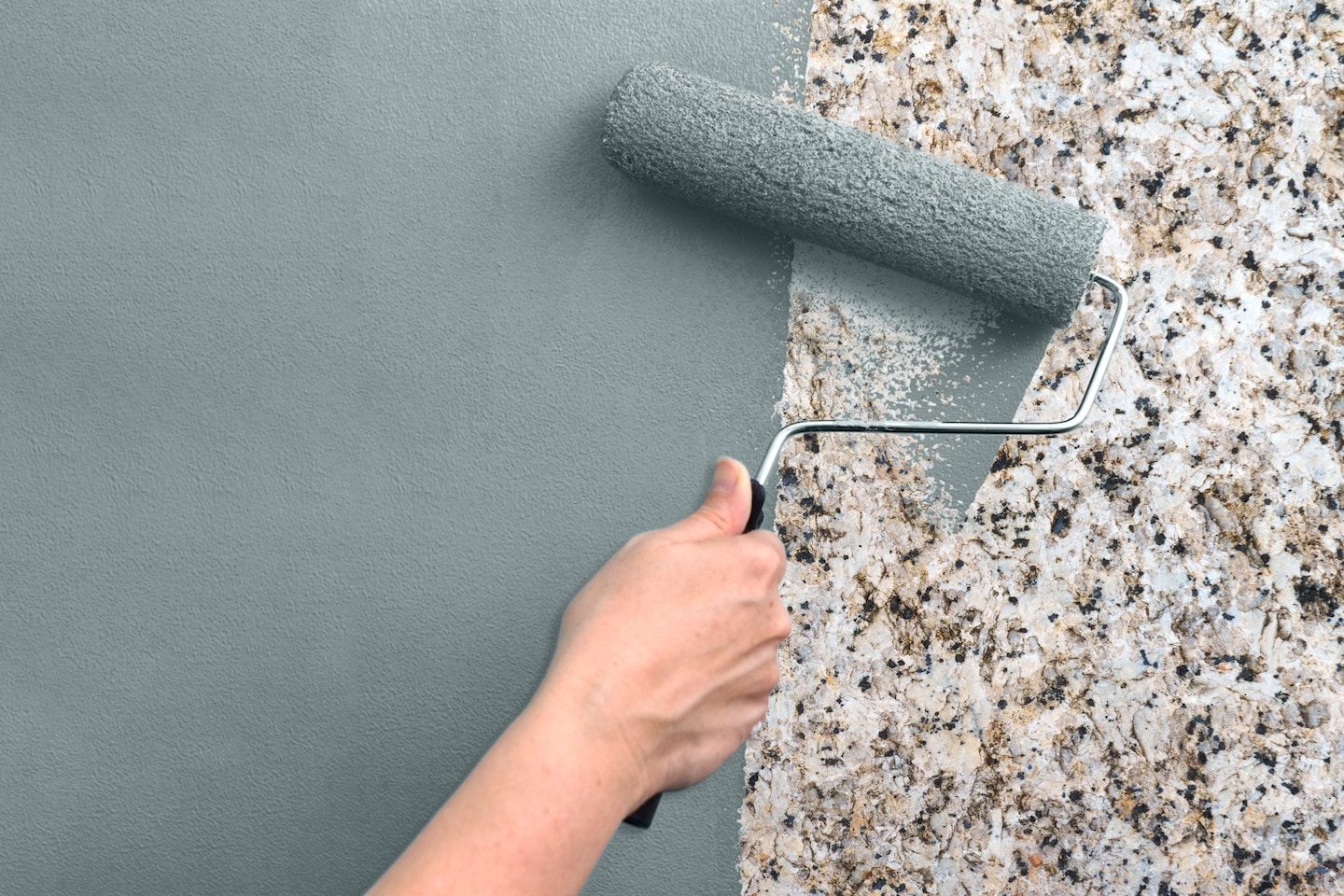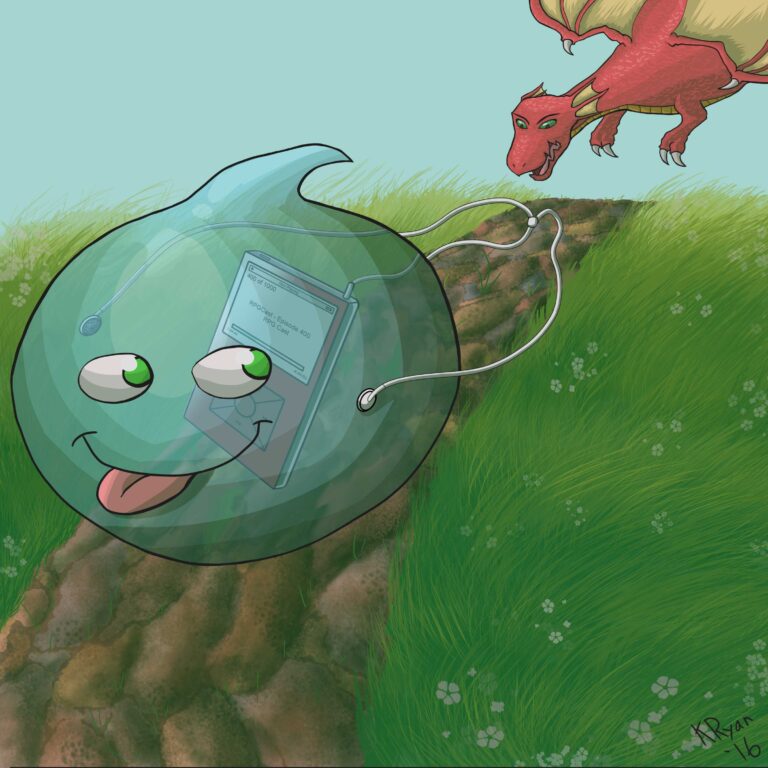“We get asked quite often about [painting countertops] and typically we don’t like to just because of the longevity of it,” says Mike Kremsreiter, lead painting consultant at on-demand house painting platform Improovy. Kitchen counters, in particular, sustain significant wear and tear. While there are high-quality countertop painting kits on the market, with paint and sealer that should look good for a time, Kremsreiter says even meticulous jobs will be vulnerable to damage. “You may get two or three years out of it, but then it fails to the point where you have to replace the countertops.” Also notable: This isn’t a renter-friendly upgrade, because it’s extremely tough to reverse.
Lizabeth Cole, an avid DIYer who lives in Burnt Hills, N.Y., has painted two sets of kitchen countertops with mixed results. Her first try, in a former home, involved following an online tutorial to freshen up outdated laminate. While she didn’t use a kit specifically designed for the purpose, she made sure to buy paint and sealant advertised as safe, durable and wipeable for an eating surface. Cole says the final result held up for about three months before she noticed issues. “If you moved a pan across, it would scratch,” she says, which didn’t work in a home with three children. “From afar, it brightened the area up, but when you looked closely, you could see all the imperfections.”
She was more careful for her next go-round, painting the gray laminate in her current home. This time, she started with a coat of primer and sealed the job with four coats of shellac. The extra work was worth it, Cole says, creating a harder surface that lasted for about eight months before flaws, including minor bubbling, showed up. Even so, she says she’d do it again as a temporary stopover to a full renovation: “I think it’s a fine solution for a six-to-12-month aesthetic update.”
If you want to give it a try, Kremsreiter recommends countertop-painting kits, which come in a variety of options designed to mimic higher-end finishes such as marble or quartz. These remove some of the guesswork, since they include coatings that are made for this specific project, plus step-by-step instructions. Follow those directions closely, taking care not to cut any corners, for the best results. Here’s what else to keep in mind.
For your safety, you must use only products approved for countertops. Paints made for use outside or in places where they won’t come into contact with food and water may contain chemicals or other compounds that can be harmful if ingested, says Kremsreiter. You can find countertop painting kits from companies such as Rust-Oleum, Daich Coatings and Giani that come with the appropriate cleaners or primers, paints and topcoats.
Samantha Stoddard, who documents projects in her Virginia Beach home on the DIY Instagram @salvagedbysammie, has painted countertops twice using a kit by Rust-Oleum (the brand partnered with her on the second project). Beyond the kit, Stoddard says she separately picked up a spray bottle and bucket to dilute and apply the cleaning agent, four-inch paint rollers, a paint brush and caulk. She says it’s worth investing in high-quality rollers and brushes to get the smoothest finish. She looks for brushes with thin, well-distributed bristles, which she says are better able to hide brushstrokes; smaller rollers may provide better control, too.
Consider your existing countertop material
According to David Shetsiruli, owner of Capitol Stone Care, paint will adhere to artificial materials such as laminate, concrete and the varnish that coats butcher block much better than it will to natural surfaces such as marble or granite. “Natural stones are porous, so when you apply a sealer, the stone sucks it in,” he explains. If you’re trying to paint one of these surfaces, you’ll probably have to do more prep to get the new coating to stick (more on this below).
Be honest about your skill level
It’s not actually that easy to prep and paint a surface well, so people may overestimate their skills and wind up disappointed, says Kremsreiter. “There are times when these trends pop up and actually go against the DIYer because they oversimplify [the task] and the prep that’s necessary for it to last a long time,” he says.
Kremsreiter says you’ll need to clean the surface thoroughly for the paint to adhere properly. This involves dusting, then using a degreaser or cleanser to get rid of any remaining residue. While many kits say you don’t have to sand a countertop before painting, he says doing so will help the paint stick. Be sure to use sandpaper between 180 and 220 grit, as anything lower will leave scratches that may be visible through the paint and anything higher will buff the surface rather than etch it. Kremsreiter prefers using a mechanical sander for precision.
The painting part may also be tougher than you expect. It takes practice and skill to apply protective tape in straight lines and to nimbly move brushes and rollers around for an even application. To get more comfortable with your tools, Kremsreiter recommends practicing with your roller or brush on a piece of cardboard.
Give yourself plenty of time
Once the prep work is finished, allow ample time for the paints and sealers to adhere to the surface, dry and cure. Depending on which kit you use, you may need to apply several coats of paint. When working with multiple coats, leave enough time for each to dry before adding the next. Don’t forget to let the final layer of sealer or epoxy cure, too. “Some of the kits are very specific and require a ‘sweat-in time’ in order for the product to mix together, and it won’t perform the way it’s supposed to if you don’t follow directions,” Kremsreiter says.
Not sure which kit to pick? He recommends heading to your local paint store for recommendations; they’ll have a good grasp on which products are available, and may have heard direct reviews from customers. Depending on the size of your space and the required drying periods, painting your countertops can easily turn into a days-long project. So, plan ahead, and before you begin, count on your bathroom or kitchen being unusable for a while.
#paint #countertops





















+ There are no comments
Add yours